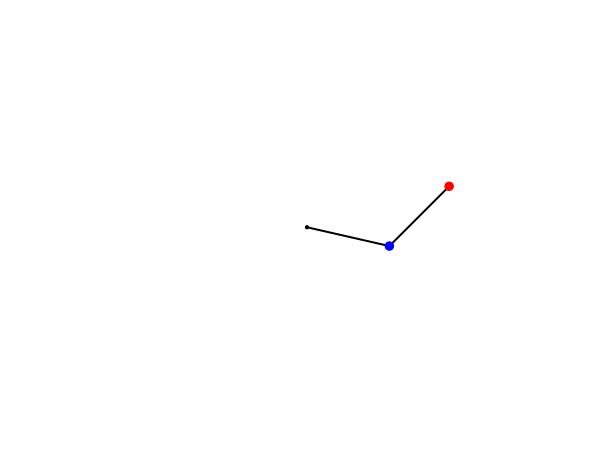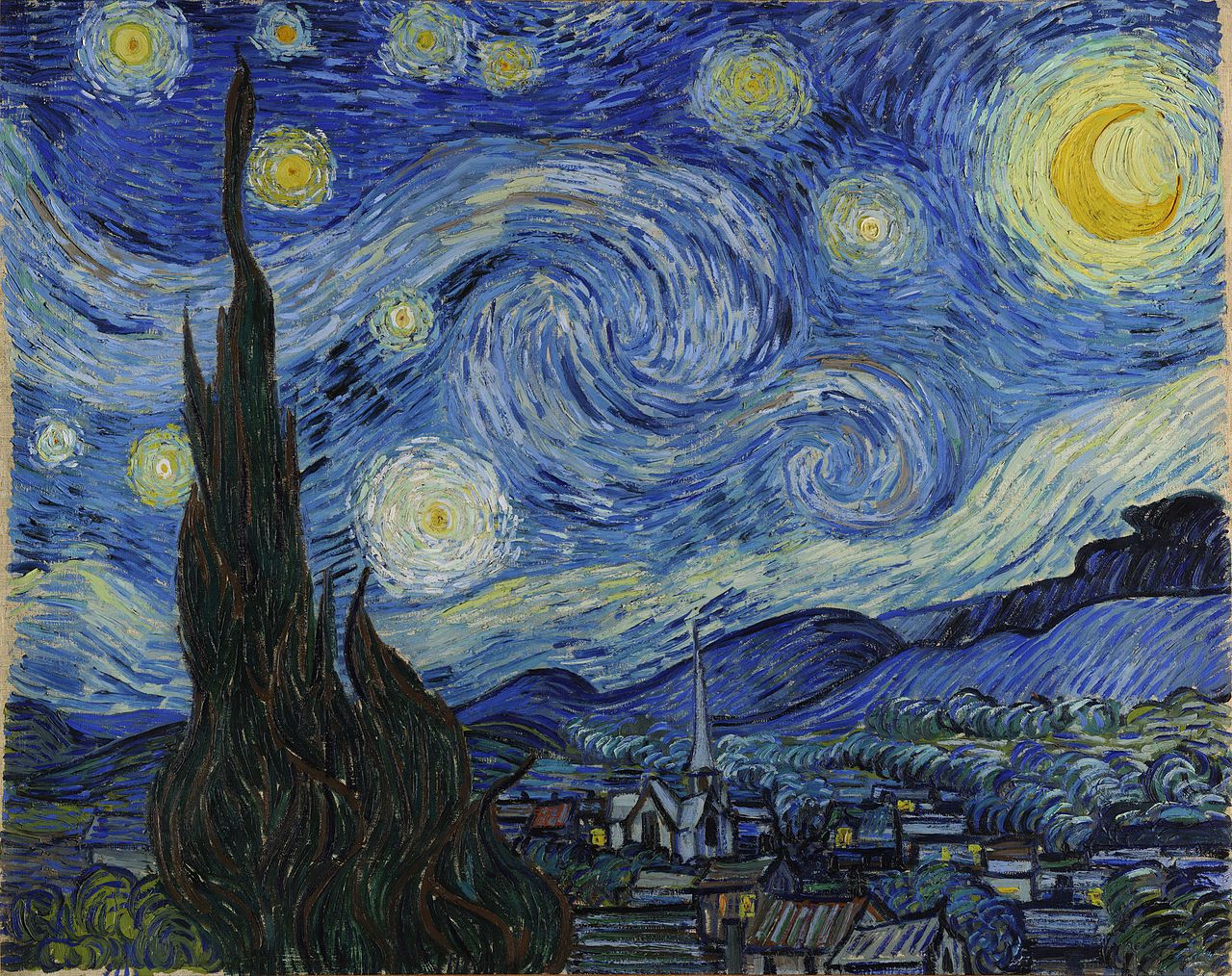Week 2: Math + Art
Often math and art are seemed to oppose one another, however, the reality is that they are complements, not enemies. Ideas such as the 4th dimension frequently require the combination of art and math to conceptualize and study. The idea of the 4th dimension is detailed very interestingly in the film and reading Flatland, where a two-dimensional character struggles to comprehend and then explain to his peers the concept of a third dimension. Although this may just seem like a story to us, it is a great example of how literature and film can tackle hard mathematical concepts and convey them using the arts. And while the characters of Flatland struggle to conceptualize and accept the third dimension, it is a great analogy for our own society’s struggle to grasp the 4th dimension. This struggle is often thought of to be a mathematical problem, but as Henderson explains in his article on the 4th dimension, “in the development of new metaphors for space artists, physicists, and mathematicians are in step” (Henderson 209).
The golden ratio is another example of how the worlds of math and art collide with great effect. The ratio follows the rule of a smaller line having the same ratio to a long line as the long line has to the sum of the two. Famous structures such as the Parthenon were constructed using the golden ratio, displaying how art can utilize math effectively to create amazing projects. The golden ratio was also used by historical artists spanning from the likes of Leonardo Davinci up to more modern artists such as Piet Mondrian. One of Piet Mondrian’s most famous pieces, called Compositions with Red, Blue, and Yellow used the golden rectangle taken from the ratio repeatedly to create a piece that influenced the world of abstract art heavily. Mondrian painted many other abstract pieces too, which consisted of geometric shapes and angles combining the worlds of math and art. Another great example of Mondrian’s is his New York City and Jazz, which masterfully uses geometry to tell the story and life of a city, which would be impossible without both art and math.
As many artists use math to create their work, it is not always the case that art follows math. As found in the works of artists like Van Gogh during his Starry Night phase, the flow of his paintings have been found by physicists to model turbulent flow, even though that mathematical concept was not studied until the 1940s. In fact, equations that created models for turbulent flow published in 1941 almost exactly matched “the proportions of the eddies of clouds and luminance in the night sky of The Night Sky” (Cooper) which was painted in 1889.
After learning about the relationship between math, art, and science this week, it is clear that their juxtaposition is not a coincidence. Art and math, although not alike on the surface, relate to one another in many ways that help create complex mathematical relationships as well as beautiful pieces of art.
Sources:
Abbot, Edwin A. "Flatland: A Romance of Many Dimensions." Print.
Cooper, Luke. "Art and Mathematics." Medium, 10 Aug 2019. https://medium.com/nice-slice/art-and-mathematics-a2677a515450. Web.
"Double Pendulum Turbulence Model." Sciphython. https://scipython.com/static/media/uploads/blog/double_pendulum/double_pendulum.gif. Web.
Henderson, Linda Dalrymple. "The Fourth Dimension and Non-Euclidean Geometry in Modern Art: Conclusion." Leonardo, vol. 17, no. 3.,1984 pg. 205-210. Print.
Mondrian, Piet. "Compositions with Red, Blue, and Yellow." Soho Art. https://www.soho-art.com/oil-painting/1044463682/Piet-Mondrian/Composition-with-Red-Yellow-Blue-and-Black-1921.html
Otto, Celia Leiva. "How to Read Piet Mondrian." Daily Art Magazine, 27 Apr 2020. https://www.dailyartmagazine.com/how-to-read-piet-mondrian/. Web.
Palmer, Lauren. "Art Form in Works Which Reflect the Golden Ratio." Art Net, 02 Oct 2015. https://news.artnet.com/art-world/golden-ratio-in-art-328435. Web.
"Symmetry and the Fourth Dimension." Azimuth. https://johncarlosbaez.wordpress.com/2013/06/04/symmetry-and-the-fourth-dimension-part-10/. Web.
Van Gogh, Vincent. "The Starry Night." Van Gogh Gallery. https://www.vangoghgallery.com/painting/starry-night.html. Web.
Vesna, Victoria. "Mathematics-pt1-ZeroPerspectiveGoldenMean.mov." Youtube, 09 Apr. 2012. https://www.youtube.com/watch?v=mMmq5B1LKDg. Web.




Hi Jonathan, I enjoyed reading your blog. I knew that math was involved with art through things like the golden ration but I did not realize physics was involved with as well. The example with the Starry Night painting and it modeling turbulent flow was interesting. It seems that math is not just involved with in the creation of art, but also a gateway for the sciences to have an influence on art.
ReplyDeleteI also like how you wrote that art can help explain math concepts. I especially think that art is good for visual learners to learn math concepts. As a visual learner myself, I prefer to see examples rather than explanations when understanding math/physics concepts--for example I needed to have a physical model to understand things like torque direction.
A question I have is do you think art can one day be used to find a new math concept--something we weren't able to come up with or notice because it was too abstract?
Hi Jonathan,
ReplyDeleteI followed the same train of thought that you wrote about in my own personal blog, so I enjoyed reading what you posted and think you put together a really fluid argument as to why math and art are so similar. The examples you used served their purpose well in demonstrating how the two subjects are not as different as one may believe, and even are dependent on each other to reach their full potential. Additionally, I believe you made an argument that could be very boring a fun piece to read, with appropriately used visuals and the addition of the analogy of the Van Gogh paintings and turbulence model. From the lectures and materials from this week, I've begun to believe that students need to be taught earlier on in their academic career some of the similarities between these fields. I would be interested to know if you agree with this notion, or if you think that the subjects should still be separated into their respective classes.
This comment has been removed by the author.
ReplyDeleteHi Jonathan,
ReplyDeleteI really liked your posts and second your thoughts. There is no doubt that art and math are mutually inclusive. This makes apparent that their juxtaposition, while being no coincidence, relies on sets of mathematical patterns and relationships that help create visually appealing artworks, such as the ones you mentioned. The double pendulum turbulence model that you brought up that describes the movement of Van Gogh's piece is especially interesting to me, with accordance to the characters in Flatland. Abbott's fictionalization of them and literary metaphors of their struggles in accepting a new, developing dimension is crucial to a better understanding of art and its impact in a society.